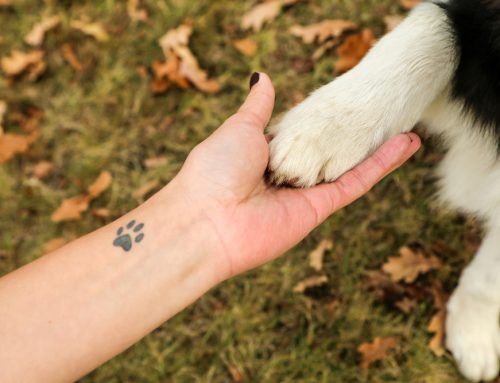If there were ever a time to ask pets how they feel, it would be during their final stage of life. Instead, their families must make difficult end-of-life decisions based on their intimate understanding of their senior pet’s needs. Fond Farewell was created to ease this burden by guiding pet owners through end-of-life decision making and providing a dignified passing for every pet. This loving process starts with assessing quality of life (QOL).
What is quality of life for senior pets?
QOL is a way to describe your pet’s wellbeing, as well as their daily needs and lifestyle to determine if extraordinary measures are sustainable and justified. For ailing senior pets, these needs may include:
- Nursing care
- Husbandry
- Physical assistance (e.g., being carried or transported with a sling)
- Feeding
Because each pet is an individual, lifestyle is more subjective and includes:
- Social interactions
- Responses to favorite things
- Awareness of or engagement with their surroundings
What can impair a pet’s quality of life?
As your pet ages, their daily needs and lifestyle are impacted by conditions that affect their physical or emotional health. Common examples include:
- Chronic conditions — Osteoarthritis causes painful joint inflammation and decreases mobility. Such pain and physical limitations can lead to depression, anxiety, and obesity in senior pets.
- Cancer — Senior pets are more likely to suffer from cancer and less likely to respond to treatment.
- Cognitive dysfunction syndrome — Older pets can experience dementia-like deterioration and may be unable to recognize familiar people and places.
- Sensory loss — Vision and hearing loss can decrease an aging pet’s confidence and independence.
- Organ failure — Kidney and liver failure are progressive conditions that require supportive care to minimize discomfort and clinical signs.
For each condition, dedicated pet owners and veterinarians must make every effort to ensure pets are as comfortable as possible—however, despite their best attempts, most progressive conditions will eventually stop responding to treatment or require an unrealistic and unsustainable level of round-the-clock care.
Why is knowing when it’s time to say goodbye to my pet so difficult?
Concerned pet owners always ask how they will know when it’s time to say goodbye. Unfortunately, because we have unique emotional bonds with our pets, and end-of-life decisions are final, everyone’s answer is different. When facing euthanasia, pet owners may grapple with complex emotions, such as anticipatory grief, guilt, sorrow, or shame and criticism from friends and family who do not understand pet grief.
How can I objectively assess my pet’s quality of life?
The beautiful relationship that you’ve built with your pet can prevent you from seeing their circumstances clearly. For example, because of your desire to hold on to your pet, you may downplay their care needs (e.g., “It’s not that much work”) or overlook their struggle (e.g., “He falls a lot, but he can still make it outside”). To ensure the best possible care for your pets, you must put aside your love and affection and measure their QOL objectively.
Many excellent QOL scales are available on our Resources page, including:
- HHHHHMM Quality of Life Scale
- JOURNEYS Quality of Life Scale
- The Ohio State University Quality of Life Scale
Because each assessment takes a slightly different approach—some more intuitive, and others more clinical—we encourage senior pet owners to try them all and select the one that best suits their needs.
What should I consider when evaluating my pet’s quality of life?
Each QOL scale covers the same key categories for measuring a pet’s needs and lifestyle. Such categories include:
- Pain and anxiety — Pets experience pain differently than people, and often instinctively hide their pain as self-protection. Senior pets may demonstrate pain in classic ways (e.g., vocalizing, limping), or through more subtle means, including personality changes, self-isolation, inactivity, appetite changes, and anxiety. In addition to traditional ache-like pains, senior pets may struggle to breathe normally, so considering all body systems is important when evaluating pain.
- Appetite and thirst — Your pet’s appetite and thirst reveal important information about how they feel. If they show little to no interest in food, or must be coaxed, persuaded, or need help to eat, their health may be declining. Dehydration can be temporarily corrected with at-home fluid therapy (i.e., subcutaneous fluids), but this process requires daily effort and may increase urination.
- Social interactions and awareness — Aging or ailing pets may lose interest in social interactions, and no longer seek affection. Cognitive dysfunction and some disease processes may affect their ability to recognize loved ones and familiar places, and cause disorientation and anxiety.
- Care needs — Senior pet health and care needs can change quickly, and your list of daily duties can mount. QOL assessments challenge owners to consider their pet’s independence and how much assistance they regularly require, including:
- Grooming and hygiene
- Feeding
- Elimination
- Mobility
- Medicating and performing treatments
- Good versus bad days — When your pet’s bad days outnumber their good days, their QOL is compromised.
What if I wait too long to say goodbye to my pet?

Sometimes, senior pets decline so rapidly that you have little time to plan, and in such unfortunate circumstances, an emergency euthanasia is the kindest option. Whenever possible, we recommend regular QOL assessments so you can anticipate your pet’s needs, avoid unnecessary suffering, and provide them with the dignified and loving goodbye you both deserve.
Contact Fond Farewell for additional end-of-life guidance, or to arrange your beloved pet’s farewell care. QOL assessment tools and access to grief counseling can be found on our Resources page.

















Leave A Comment